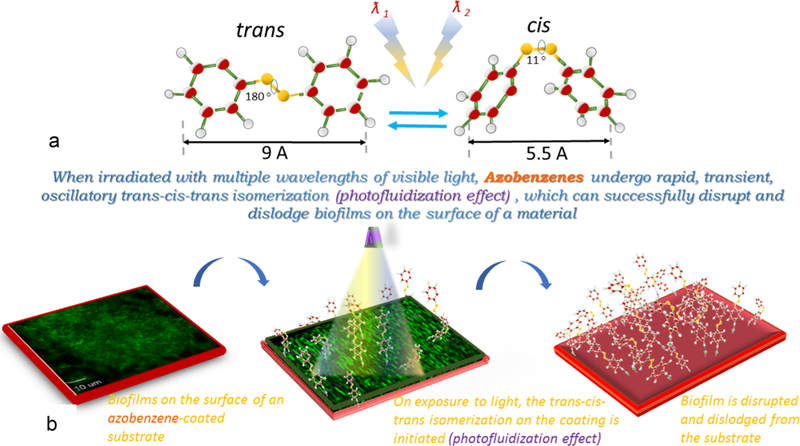Figure 1.

Azobenzene change in conformation from trans to cis upon exposure to UV light (~365 nm) and from cis to trans upon exposure to visible light (~490 nm) or heat. However, when irradiated with intermediate wavelengths (430–480 nm), azobenzenes undergo rapid, transient, oscillatory trans–cis–trans isomerization (photofluidization effect) and can successfully disrupt biofilms on the surface of a material (panel a). The photofluidization effect can be used to disrupt biofilms from the surface of a substrate (panel b).
